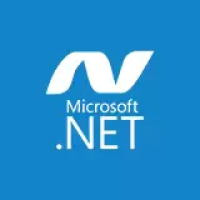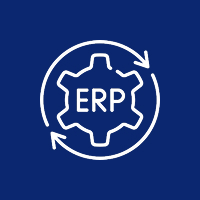In the modern world of rapid digitization, organizations require applications that are highly scalable, resilient, and manageable. Monolithic architectures, being conventional, fail to deliver these needs, resulting in slow deployment, maintenance problems, and scalability concerns. This is where microservices step in.
Microservices architecture enables companies to split big applications into small, individual services that communicate with one another. Each microservice is accountable for a certain function and can be developed, deployed, and scaled separately. This modular strategy offers more flexibility, fault tolerance, and better performance. If developed with.NET, microservices become even more capable, providing high performance, security, and easy integration with new cloud environments.
Why Choose .NET for Microservices Development?
Scalability and Performance
.NET, particularly with ASP.NET Core, is designed for high performance and efficiency. It allows developers to create light and fast microservices that can manage high traffic volumes efficiently. In contrast to monolithic applications, which need to scale the whole system,.NET microservices can be scaled independently depending on demand. This makes it possible to have efficient use of resources, improved load balancing, and lower operating costs.
In addition,.NET’s asynchronous programming support and caching features enhance application responsiveness, making it ideal for developing large-scale distributed systems.NET’s performance optimizations, including Just-In-Time (JIT) compilation, garbage collection optimization, and low memory footprint, further boost microservices’ efficiency.
Containerization with Docker and Kubernetes
Microservices development is significantly improved through containerization.
.NET works naturally with Docker and enables developers to bundle applications alongside their dependencies as isolated environments. This provides assurance of consistent functionality across various phases of deployment from development to deployment.
Kubernetes, a robust container orchestration system, augments .NET microservices by providing automation of deployment, scaling, and management. With Kubernetes, companies can deploy and run multiple copies of their microservices, providing high availability as well as fault tolerance. Azure Kubernetes Service (AKS) and Amazon Elastic Kubernetes Service (EKS) offer cloud-native support, further simplifying deployment.
Cloud-Native Development
New applications need cloud-native functionality, and.NET is particularly suited for this need. It is compatible for deployment on significant cloud providers such as Microsoft Azure, AWS, and Google Cloud. Utilizing cloud computing enables companies to accomplish automatic scaling, enhanced redundancy, and global access.
With serverless alternatives like Azure Functions and AWS Lambda, .NET supports developers to execute event-based microservices without needing to manage infrastructures. Cloud platforms also provide managed databases, monitoring tools, and networking services that perfectly integrate with .NET microservices.
Inbuilt Security and Authentication
Security is a major issue while constructing distributed systems.NET has strong security capabilities, providing safe authentication, data encryption, and API management. It accommodates industry-standard authentication protocols such as OAuth 2.0, OpenID Connect, and JWT (JSON Web Tokens), making it possible for secure communication among services.
Role-based access control (RBAC) and identity providers like Azure Active Directory (AAD) assist in enforcing security policies. Furthermore,.NET’s intrinsic data encryption, secure HTTPS communication, and adherence to enterprise security standards make it a trusted option for sensitive applications.
Asynchronous Communication with gRPC and REST
Communication among microservices is essential to the application’s seamless operation.NET supports several communication protocols, including RESTful APIs and gRPC. REST APIs support loose communication using HTTP, making it easy to integrate with various front-end and third-party services.
gRPC, a performance-based remote procedure call (RPC) framework, is more efficient and faster with Protocol Buffers (Protobuf). It reduces network latency and improves real-time microservice communication. For event-driven systems, message queues like RabbitMQ, Kafka, and Azure Service Bus are available in.NET, ensuring guaranteed asynchronous processing.
Resilience and Fault Tolerance
Microservices need to be built so that they fail elegantly.NET boasts native tools to promote resilience, such as Polly, which enable developers to inject retry policies, circuit breakers, and fallbacks. This prevents cascading failures and enables microservices to function even when there is a failure in a component.
With distributed tracing and logging tools like Application Insights and OpenTelemetry, businesses can monitor system health, detect anomalies, and resolve performance hotspots efficiently.
DevOps and CI/CD Integration
New software builds rely on continuous integration and continuous deployment (CI/CD) to make release processes automated.NET apps can be effortlessly integrated with DevOps tools such as Azure DevOps, GitHub Actions, Jenkins, and GitLab CI/CD. Microservices are released quickly and dependably with automated testing, build pipelines, and infrastructure as code (IaC) patterns.
Helm chart, Terraform, and Kubernetes manifest are made easily deployable for containerized.NET microservices, saving manual handling time and enhancing operations efficiency. Rollout updates as well as blue-green deployments are facilitated by CI/CD pipelines to offer zero-downtime release.
Best Practices for Developing .NET Microservices
Use API Gateway
An API Gateway is a centralized entry point for microservices, which processes authentication, request routing, and load balancing. Microservices communication is made easier by tools such as Azure API Management and Ocelot, which minimize direct service complexity.
Implement Logging and Monitoring
Successful monitoring is key to diagnosing problems and system stability. Logging tools such as Serilog, ELK Stack (Elasticsearch, Logstash, Kibana), and Prometheus offer real-time application performance insights. Distributed tracing software like Jaeger and Zipkin enable tracing of request flows across microservices.
Adhere to Domain-Driven Design (DDD)
Organizing microservices around business domains enhances scalability and maintainability. By having well-defined service boundaries, developers are able to minimize dependencies and make sure microservices are loosely coupled.
Guarantee Data Consistency
Data consistency in microservices is difficult to manage. Methods like event sourcing and CQRS help achieve consistency between services. Utilizing distributed databases like Azure Cosmos DB, Amazon DynamoDB, and PostgreSQL with logical replication provides effective data synchronization.
Implement Circuit Breakers
To avoid service failures from propagating, circuit breakers ensure that failing elements are isolated and the system recovers gracefully. Polly and Resilience4j offer strong implementations for coping with transient failure and network exceptions.
Conclusion
Developing scalable microservices with .NET provides businesses with a powerful, secure, and efficient way to build modern applications. By leveraging .NET’s cloud-native capabilities, seamless integration with DevOps tools, and support for containerization, organizations can create highly resilient and scalable software solutions.
Whether you’re modernizing an existing application or building a new microservices-based system, .NET offers everything needed to develop and manage high-performance distributed applications. By following best practices and utilizing the latest tools, businesses can create flexible, efficient, and future-proof microservices architectures that drive innovation and growth.
Contact Us Today













 Database Development
Database Development












































